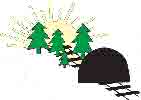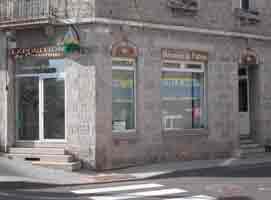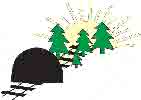

[Varian Fry Institute] [Chambon Foundation Home] [Chambon Institute Home]
OUTDATED TEXT & MISSING IMAGES!
There is a new museum in Le Chambon!
Thanks in large measure to the determination of Mayor Eliane Wauquiez-Motte, Le Chambon-sur-Lignon now has a museum about the rescue effort that took place throughout the area. The new museum, modestly called a "Lieu de Mémoire"—a Place of Memory—was inaugurated in 2013 and has been welcoming many visitors since then. For more information: Lieu de Mémoire/Place of Memory.
During
World War II and the Nazi occupation of France, the old Huguenot mountain
village of Le Chambon-sur-Lignon, France, turned itself into a haven of refuge
for Jews and other refugees. It has
been estimated that some 5,000 Jews found shelter, briefly or for extended
periods, in Le Chambon and in other villages and hamlets of the Plateau
Vivarais-Lignon that surrounds Le Chambon.
In
that tiny corner of the world, the peasants and villagers turned no one way,
betrayed no one, attempted to convert no one.
There was something to be done, and they simply did it.
No big deal: it was who they were. Israel’s
Holocaust Memorial Yad Vashem normally honors only individuals for their
righteous deeds during that trying time; the area of Le Chambon has been honored
collectively, and a tree planted in its honor along the Avenue of the Righteous.
The
Chambon Foundation long strove to plant something more.
Tourists now come to Le Chambon—situated in south-central France an
hour and a half’s drive from Lyon or Saint-Etienne—not merely for the
beautiful scenery and the invigorating mountain air; but the moral air and for
the peace and inspiration they hope to find there.
Not a wealthy community, Le Chambon nonetheless sought to respond to this
need—to become useful yet again.
On June 24, 2002, the city council of Le Chambon-sur-Lignon voted
unanimously to partner with the Chambon Foundation to create a village-wide and
area-wide multifaceted museum project.
First to open was the Expo du Carrefour situated at le carrefour—the crossroads--at the very heart of the village, a short distance from the Protestant temple where the two pastors of the village in 1940 urged resistance to the Nazis “through the weapons of the spirit,” a short distance from city hall, from the tourist office, from pleasant hotels, from the children’s home where onetime Museum Project Director Rudy Appel was himself taken in and sheltered. For Chambon Foundation president Pierre Sauvage, it was only a short drive to the hamlet where he had the good fortune to be born and protected.




onetime Exposition du Carrefour, headquarters in Le Chambon of the Chambon Foundation and its French counterpart Amis du Chambon;
also, the same building at the beginning of the 20th century and on September 3, 1944, when allied tanks rumbled through the village
An integral part of the life of the village until it had to close in 2005, funded entirely by the Chambon Foundation and its supporters, mostly in the U.S.A., the Expo du Carrefour hosted a temporary exhibit on the wartime rescue effort, as well as an exhibit of Le Chambon-related paintings by Hans Beutler, who was a rescue worker in Le Chambon during the war.
A uniquely suited old farmhouse just two minutes from the main intersection was acquired in 2003. From 2003 to 2008, when it was sold, the farmhouse could have been renovated and turned into the Chambon Museum and a centerpiece for an area-wide museum complex.



Le Chambon-sur-Lignon,
with farmhouse in foreground that from 2003 to 2008 could have become Chambon Museum
In 2002, grant applications were made to the Paris-based Fondation pour la Mémoire de la Shoah and to the Conference on Material Claims Against Germany in New York. (In 2004, the Fondation pour la Mémoire de la Shoah provided support for the "Liberation Reunion" / Journées Mémoires du Plateau organized by the Chambon Foundation and the village of Le Chambon-sur-Lignon.)
While the Chambon Foundation's efforts failed, we actively supported the renewed local efforts. Happily, the memory of the Holocaust, the memory of the righteous, and the memory of this rare community once so singularly welcoming to the Jews is now entwined forever in a museum the area needed!
[Varian Fry Institute] [Chambon Foundation Home] [Chambon Institute]
[email us] [contact information] [table of contents] [make a contribution?] [search] [feedback] [guest book] [link to us?]
© Copyright 2014, Chambon Foundation. All rights reserved. Revised: July 15, 2014